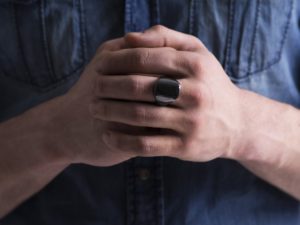It’s the last in this series of tips on how to improve your mood throughout the year. So far, we’ve talked about natural light exposure, breathwork, and sleep. This week, I want to discuss blood glucose regulation.
Our blood glucose – or sugar – levels are largely down to the foods – and some liquids – we put into our bodies. There are other things that can also affect these levels, such as exercise timing and stress, but right now I want to talk about food.
Mood Control
As mentioned earlier in the series, I am actively taking measures to manage my mood. This is due to experiencing the negative effects of the perimenopause, specifically hormonal changes. With this, I’ve been paying a bit more attention to what I’m eating: the food that I’m using to fuel my body throughout the day. I don’t tend to drink a lot of calories; for example, sugary sodas or alcohol. Therefore, I’ve been focussing my efforts on minimising foods that cause blood sugar levels to spike.
The Higher The Spike, The Harder The Crash
When we ingest certain food types, such as biscuits or white rice, our blood glucose levels rise quickly. This is at least so for most of us, though it does vary from person to person. And that’s because they have a high glycemic index (GI), which refers to a system used to rate foods containing carbohydrates. High GI foods are broken down quickly by our bodies, generating a rapid increase in blood glucose. Now, the pancreas – or more specifically, the beta cells within the pancreas – will recognise this elevation, which it doesn’t particularly want. In response, it will dispatch insulin to bind to that glucose and take it out of the blood and store it within the muscles, liver, and fat cells. As a result, you get a quick boost of energy, followed by a big drop as the insulin does its job.
The higher the spike, the harder the crash – and to counteract this, you might even find yourself seeking another biscuit or sandwich. It’s these dramatic oscillations in energy you really don’t want – especially when trying to control your mood.
A Few Small Tweaks
So, I’m trying to minimise eating foods that have this effect on my body. I have a rough idea what they are, and you could probably guess quite easily if you don’t already know, too. For example, jacket potatoes, crisps, and chocolate will have a faster, shorter impact than certain vegetables, which provide a more consistent level of energy. And if you also find yourself struggling with mood, I would strongly suggest assessing your diet. With just a few small tweaks – nothing too drastic – you can really make a difference. Perhaps starting with breakfast, you could try opting for something a little cleaner and more sustainable. To learn more about high and low glycemic index foods, click here.
And that’s it for this series – I hope it’s been helpful. We’ve covered a number of ways to help manage your mood, and as always, I’m interested in your feedback. If you’ve tried any of these techniques, let me know by getting in touch on social media.
Wellbeing Resources
Our Wellbeing At Work Workshops help employees take ownership of their health. We use a blend of science and technology to empower participants to own their health via actionable insights that can be implemented straight away. Our interactive programmes cover Sleep, Mental Health, Energy, Resilience & Immunity, and bespoke workshops are available on request.
Burnout among busy professionals is reaching epidemic proportions and results in unhappiness, impaired mental health and shortened careers. Leanne’s book, Cadence, can help. Inside the pages of this short, easy read, you will discover how to apply the simple and effective Cadence Approach™ to your life. It’s the secret to beating burnout and performing in life and work.


